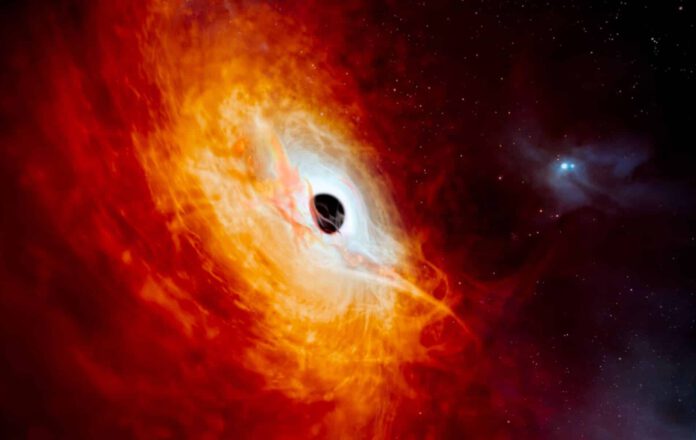
Remarkable Quasar Discovery Made Using the Very Large Telescope (VLT)
Researchers have made a groundbreaking discovery using the Very Large Telescope (VLT): an incredibly bright quasar housing an equally extraordinary black hole. This black hole is consuming more than a solar mass per day, qualifying it as the fastest-growing black hole discovered to date.
This mindboggling fact comes from an article published in Nature Astronomy, which highlights a quasar labeled J0529-4351.
The Science Behind Quasars
Quasars, fundamentally, are the bright cores of distant galaxies. In most cases, they are powered by rapidly growing black holes. These black holes attract matter from their surroundings and generate enormous energy levels in the process, subsequently emitting massive amounts of light. Consequently, quasars are frequently considered some of the brightest objects in the sky. But there is something exceptional about J059-4351: this quasar radiates light at over 500 trillion times the brightness of our sun, setting a new record.
The astonishing amount of light produced by the quasar J0529-4351 is attributed to the black hole it conceals. “All that light comes from a hot accretion disk with a diameter of seven light-years—the largest accretion disk in the universe,” explains researcher Samuel Lai. Researcher Christian Wolf adds, “We have discovered the fastest-growing black hole known to date. It has a mass of 17 billion suns and it devours a little more than one sun per day. This makes it the brightest object in the observable universe.”
The Elusive Quasar
The fact this quasar remained unnoticed for so long is quite astounding. “It’s surprising that it remained unnoticed for so long; we already know about a million less impressive quasars,” observes researcher Christian Onken. “It was literally shining right at us.”
An Unexpected Oversight
However, there is an explanation as to why the quasar remained undetected for an extensive period. To locate quasars, large portions of the universe need to be scrutinized. This process results in enormous data files, too extensive to manually browse. Hence, researchers regularly resort to machine-learning models. They are ‘trained’ with existing data to distinguish quasars from other celestial objects. But these models tend to search mainly for quasars similar to those previously discovered. As a result, a new and excessively bright quasar like J0529-4351 may not be recognized as such, leading the algorithm to misclassify it as a nearby star. This was precisely the case with J0529-4351; it was spotted by the Gaia satellite but dismissed during computer analysis. However, thanks to observations made using the ANU 2.3 meter-telescope in Australia, researchers identified it as a potential quasar last year. This identification was later confirmed by subsequent observations with the Very Large Telescope.
Implications Of The Discovery
Scientists are thrilled with the discovery, as it provides valuable insight into the early universe. The discovery and further study of such distant supermassive black holes can yield an abundance of critical information about the origin and evolution of the galaxies these black holes are part of.











